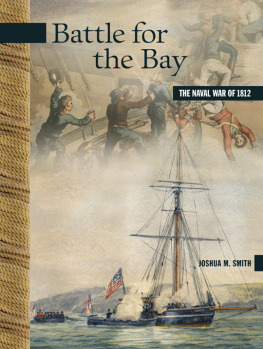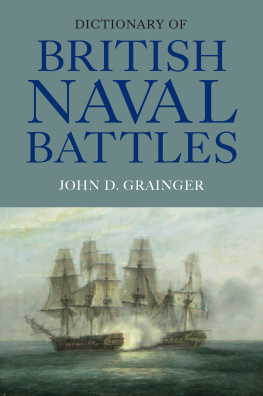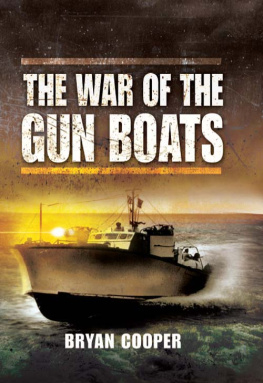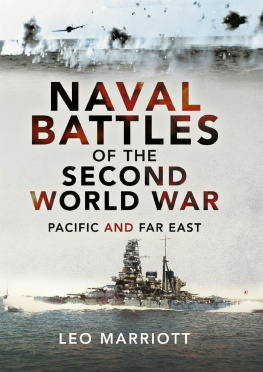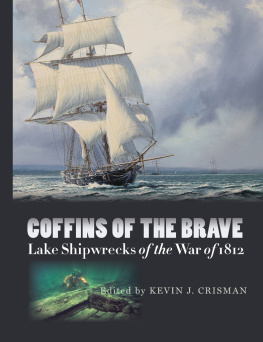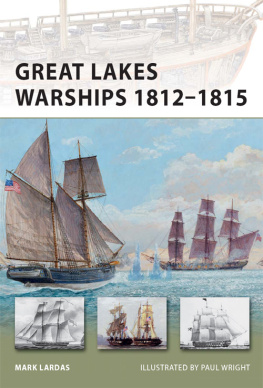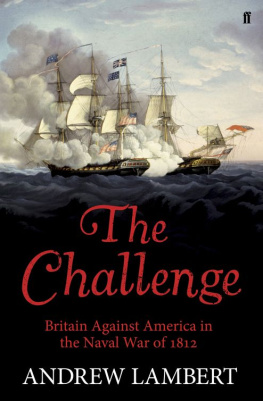

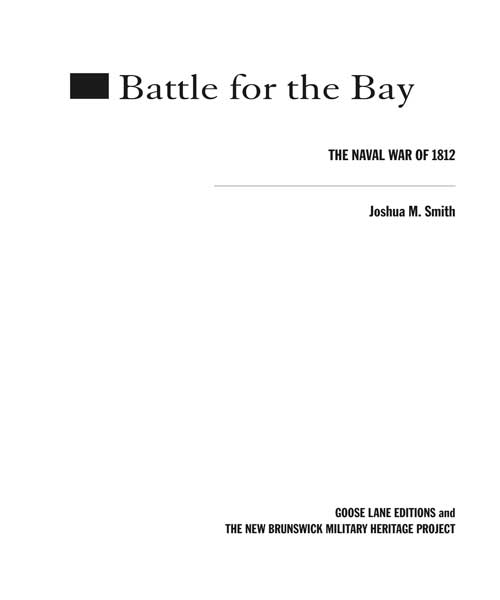
Copyright 2011 by Joshua M. Smith.
All rights reserved. No part of this work may be reproduced or used in any form or by any means, electronic or mechanical, including photocopying, recording, or any retrieval system, without the prior written permission of the publisher or a licence from the Canadian Copyright Licensing Agency (Access Copyright). To contact Access Copyright, visit www.accesscopyright.ca or call 1-800-893-5777.
Edited by Brent Wilson and Barry Norris.
Front cover illustrations by (top) John Augustus Atkinson, British Sailors Boarding a Man of War, collection of National Maritime Museum; (bottom) Irwin John Bevan, Boats of the Maidstone capture the Commodore Barry, collection of the Mariners Museum 1940.0474.000001.
Back cover illustrations (top) courtesy of National Archives of Canada; (middle) Royal Marine, Period 1835, courtesy of the New York Public Library 1199102; and (bottom) courtesy of the Hare family.
Cover and interior page design by Jaye Haworth.
Art direction by Julie Scriver.
Library and Archives Canada Cataloguing in Publication
Smith, Joshua M. (Joshua Mitchell)
Battle for the Bay: the Naval War of 1812 / Joshua M. Smith.
(New Brunswick military heritage series; 17)
Co-published by: Gregg Centre for the Study of War and Society.
Includes bibliographical references and index. Electronic monograph. Also issued in print format.
ISBN 978-0-86492-759-0
1. Canada History War of 1812 Naval operations. 2. United States History War of 1812 Naval operations. 3. Fundy, Bay of History, Military. 4. Maine, Gulf of History, Military. I. Gregg Centre for the Study of War and Society II. Title. III. Series: New Brunswick military heritage series; 17
FC449.N3S55 2010 971.034 C2010-907060-7
Goose Lane Editions acknowledges the generous support of the Canada Council for the Arts, the government of Canada through the Canada Book Fund (CBF), and the government of New Brunswick through the Department of Culture, Tourism, and Healthy Living.
Goose Lane Editions
500 Beaverbrook Court, Suite 330
Fredericton, New Brunswick
CANADA E3B 5X4
www.gooselane.com
New Brunswick Military Heritage Project
The Brigadier Milton F. Gregg,
VC Centre for the Study of War and Society
University of New Brunswick
PO Box 4400
Fredericton, New Brunswick
Canada E3B 5A3
www.unb.ca/nbmhp
To Scott See,
who introduced me to Canadian history.
Contents
Nelson Is Gone: Constabulary Duties, 1783-1812
For the Service of the Province: The Provincial Sloop Brunswicker and Littoral Defence
Bream Brings the War to the Enemy
The Sea-Fight Far Away: H.M. Brig Boxer and the Fog of War
Aprs la guerre
Prizes Captured by H.M. Schooner Bream , 1812-1813
Inventory of Items Sold from H.M. Brig Boxer , November 1813
Introduction

Writing on board his ship H.M.S. Blenheim in 1839, Captain Sir Henry Le Fleming Senhouse of the Royal Navy looked back to his time as commodore of the British naval forces in the Bay of Fundy during the War of 1812. Sir Henry was writing an endorsement for his friend Lieutenant Charles Hare, whose activity and enterprize in destroying US coastal trade and privateers won the admiration of Senhouse and of every officer who knew him. Yet, notwithstanding Hares undeniable ability, Senhouse had to admit that Hares case was one of neglected merit, for the unfortunate officer had remained at the rank of lieutenant for thirty-seven years despite his performance during the last war with the Americans. Hares lack of recognition parallels that of the naval War of 1812 as it played out in the battle for the Bay of Fundy. This work aims to rescue the service of Hare and his fellow Royal Navy officers and sailors from obscurity by examining three warships that played important roles in defending New Brunswick.
These vessels, the provincial sloop Brunswicker , His Majestys schooner Bream , and His Majestys brig-of-war Boxer , were small and operated out of Saint John during the war. While many Canadians are aware of the naval battles fought on the Great Lakes or the frigate duels fought on the ocean during the War of 1812, few will know of the naval component as it relates to the Maritimes, except for those who might recall it had something to do with privateers. The vessels that fought this war were small, yet extremely busy, and often involved in low-level combat against various US forces.
The size of these vessels and the missions assigned to them indicate that they were not warships designed to engage with enemy fleets in grand battles, but patrol craft. In peacetime they performed a constabulary role, enforcing maritime law and policy. In wartime they engaged in a form of naval warfare known as guerre de course that emphasized attacking the enemys commercial shipping and protecting ones own. It was not the sort of glamorous duty that made for rapid promotion, as Lieutenant Hare found to his dismay. But it was important work, even if it was tedious to fight winter winds, summer fogs, and the fierce tidal currents of the notoriously dangerous Bay of Fundy. It could also be deadly: shipwreck, combat, and imprisonment were constant hazards.
The Bay of Fundy and the Gulf of Maine generally is an area that has been largely ignored in histories of the War of 1812. The frequent small-scale combat fought in these waters between privateers and government vessels has received little consideration. In part this is because of the historiographical big ship bias that emphasizes blue-water battles. The War of 1812 in the Bay of Fundy and off the New England coast was decidedly not a big-ship conflict; privateers, from both the United States and the Maritime colonies, usually were less than one hundred tons and some were mere open rowboats. The naval units were equally rudimentary: a few sloops-of-war, gun brigs, and schooners. This was a petty raiding war, guerre de course in a littoral, or coastal, environment. Although they seldom operated together as a squadron, let alone a fleet, these naval forces nevertheless played an important role in the war, convoying ships between ports, patrolling the bay for hostile vessels, and raiding the enemys coast.
Chapter One

Nelson Is Gone: Constabulary Duties, 1783-1812
Early in January 1806, the news of Admiral Horatio Nelsons great victory at Trafalgar reached New Brunswick. It was an era of national pride for the British Empire, its monarchy, and the Royal Navy, and thus the response was both public and unrestrained. For years, New Brunswickers had been following the exploits of Nelson, the first of Britains truly national heroes. News of his victory over a French fleet off Egypt in 1798, for example, was met with spontaneous celebrations. Flags flew from Saint Johns fortifications and ships in the harbour, and cannon salutes were fired. The wealthy illuminated their windows with candles, a festive manner of celebrating their patriotism. New Brunswickers greeted the news of Trafalgar with a similar response. Accounts of the battle were published in full in the provinces newspapers. Many of the better off celebrated the victory by again placing candles in each window. A ball was held in Saint John in honour of the event, attended by a great assembly of beauty and fashion. There were public dinners and the drinking of many loyal toasts throughout the province.
Next page
